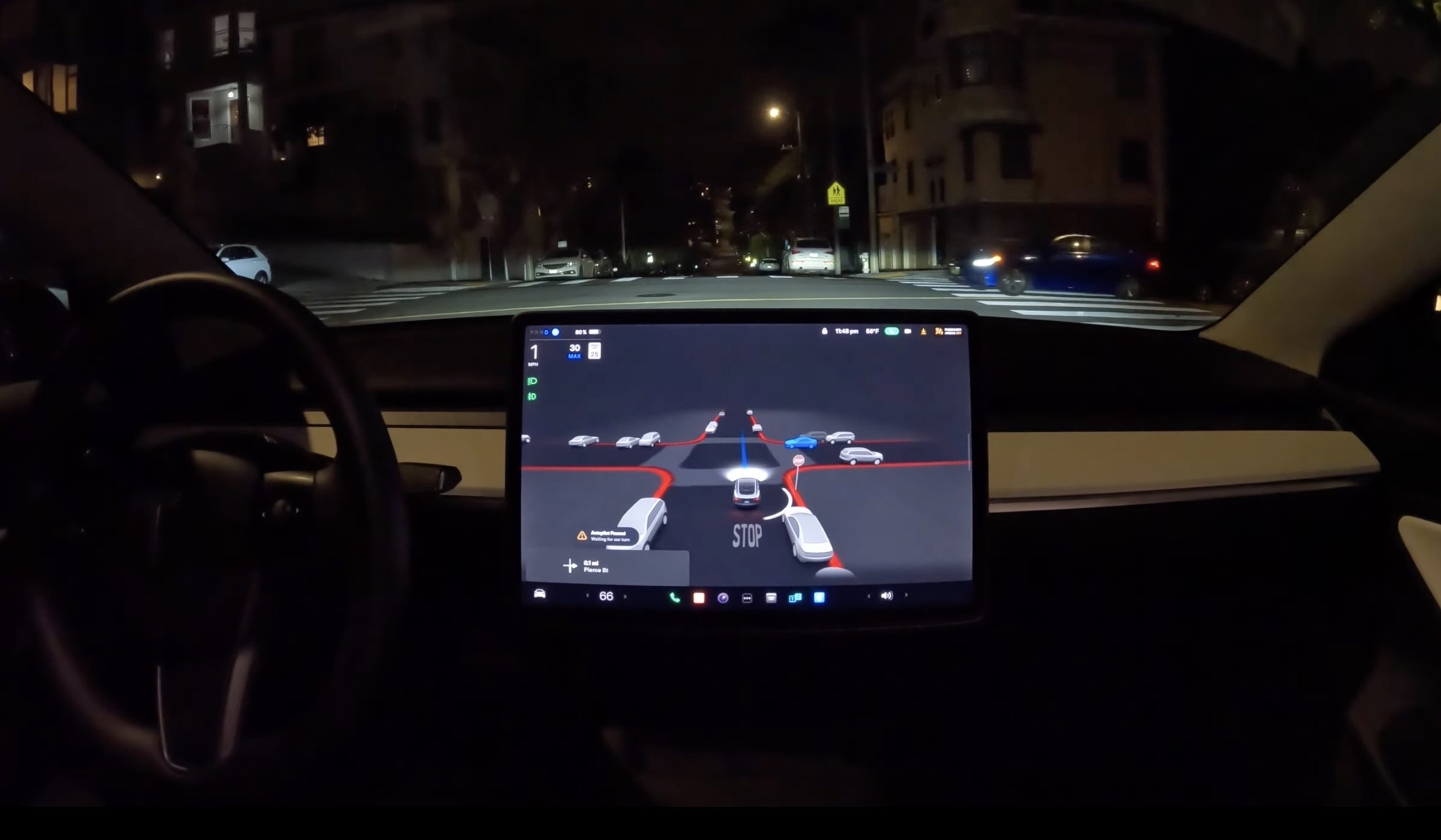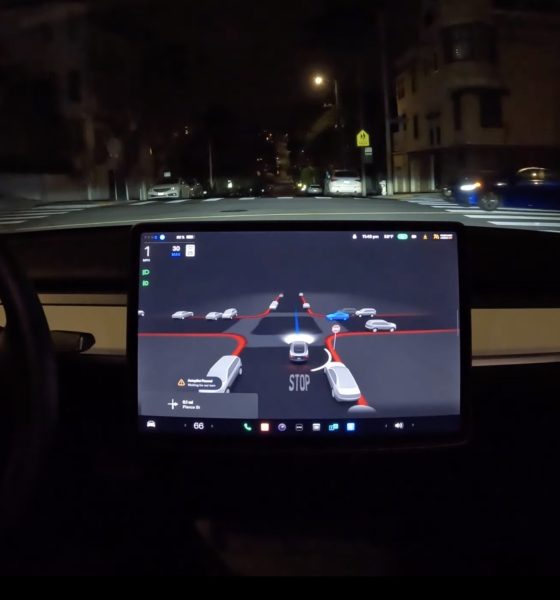

News
Tesla’s cease and desist letter has Dan O’Dowd calling Elon Musk names
Tesla’s cease and desist letter to The Dawn Project, has Dan O’Dowd resorting to childish antics and targeting a Tesla customer. Tesla’s cease and desist letter demanded that the defamatory ad be removed. Tesla also demanded that the anti-Full Self-Driving campaign be immediately halted. O’Dowd isn’t taking the letter too well as he’s sharing his thoughts about the situation on Twitter.
O’Dowd’s response included several childish antics such as name calling, an unhealthy focus on one of Tesla’s customers, Elon Musk, and Elon’s following.
Please improve your own product instead of falsely caiming that other‘s are dangerous!
— Magnus Maximus (@marky110) August 25, 2022
In the tweet promoting The Dawn Project, O’Dowd included a meme depicting Elon Musk tweeting “It never happened,” while what looked to be a young adult is tied up, gagged, and being held down by two villainous goons.
The link that O’Dowd tweeted is The Dawn Project’s response to Tesla’s cease and desist letter. The letter is full of immature name calling such as alluding to Elon Musk as “another crybaby hiding behind his lawyer’s skirt,” and being obsessed with O’Dowd who paints himself as a hero for campaigning against FSD. O’Dowd claimed that it appeared to him that Elon Musk wrote the letter mocking him for running for the U.S. Senate with the goal of stopping FSD.
The letter goes on to target a Tesla customer and FSD Beta Tester, Omar Qazi, who has also been the target of many “$TSLAQ” supporters. Omar is a Tesla FSD Beta tester and an avid supporter of Tesla. He’s also a friend of mine in the Tesla community.
O’Dowd previously mentioned Omar saying that he endorses the deployment of “AI killing machines, even if they are trying to kill our kids.” Although Omar does support Tesla and Tesla’s FSD Beta, the claim that Tesla’s FSD Beta is an AI-killing machine that is trying to kill children is entirely false.
In the response to Tesla’s cease and desist letter, O’Dowd wrote:
“It appears you are talking about unsolicited scrutiny by your infamously virulent band of fanboy Tesla stockholders, led by you and your apparent agent, @WholeMarsBlog, and motivated by greed. They immediately and widely promulgate baseless accusations against those who say anything negative about Tesla or Elon Musk.”
He also called Omar Elon Musk’s top attack dog on Twitter Although Tesla sent a cease and desist letter, O’Dowd said that Elon Musk’s plan is to use his supporters to attack O’Dowd online and hinted that perhaps Elon Musk couldn’t afford an attorney.
🦇 💩 crazy
— Elon Musk (@elonmusk) August 25, 2022
“Master Scammer Musk’s game plan: if the fanboys’ vile attacks don’t scare off a critic he threatens them with endless baseless litigation which will cost them their house even if they win. Fortunately, I can afford not to be intimidated by these threats.”
“Tesla Full Self-Driving software has no future. It is the most incompetently designed, implemented, and tested commercial software I have ever seen. All it does is take a perfectly good Tesla car and make it occasionally try to kill the driver, the passengers, and innocent bystanders.”
“I dare you to come out and defend this technology.”
The irony of all of this is that O’Dowd is also the CEO of Green Hills Software which is developing self-driving software. O’Dowd apologized for misleading people earlier this month about FSD. In his tweet, he said that he relied on reports from others that he did not verify. I responded to this tweet with a question that O’Dowd still hasn’t answered.
https://twitter.com/JohnnaCrider1/status/1558454356013469698
My question was rhetorical, but the point remains. He invested millions of dollars in an anti-FSD campaign before even trying it. Instead, he was relying on misinformation.
And according to his tweet, he only experienced it for 20 hours. It should be noted that FSD is still in beta and with O’Dowd trying to be a direct competitor of Tesla’s FSD software, it’s only natural for him to be intimidated by it.
Personally, I think O’Dowd should retire his anti-Tesla campaign and apologize to Elon Musk, Omar Qazi, and Tesla’s shareholders, customers, and employees who work hard to make a product dedicated to saving lives.
Note: Johnna is a Tesla shareholder and supports its mission.
Your feedback is important. If you have any comments, or concerns, or see a typo, you can email me at johnna@teslarati.com. You can also reach me on Twitter @JohnnaCrider1

News
Tesla FSD fleet is nearing 7 billion total miles, including 2.5 billion city miles
As can be seen on Tesla’s official FSD webpage, vehicles equipped with the system have now navigated over 6.99 billion miles.

Tesla’s Full Self-Driving (Supervised) fleet is closing in on almost 7 billion total miles driven, as per data posted by the company on its official FSD webpage.
These figures hint at the massive scale of data fueling Tesla’s rapid FSD improvements, which have been quite notable as of late.
FSD mileage milestones
As can be seen on Tesla’s official FSD webpage, vehicles equipped with the system have now navigated over 6.99 billion miles. Tesla owner and avid FSD tester Whole Mars Catalog also shared a screenshot indicating that from the nearly 7 billion miles traveled by the FSD fleet, more than 2.5 billion miles were driven inside cities.
City miles are particularly valuable for complex urban scenarios like unprotected turns, pedestrian interactions, and traffic lights. This is also the difference-maker for FSD, as only complex solutions, such as Waymo’s self-driving taxis, operate similarly on inner-city streets. And even then, incidents such as the San Francisco blackouts have proven challenging for sensor-rich vehicles like Waymos.
Tesla’s data edge
Tesla has a number of advantages in the autonomous vehicle sector, one of which is the size of its fleet and the number of vehicles training FSD on real-world roads. Tesla’s nearly 7 billion FSD miles then allow the company to roll out updates that make its vehicles behave like they are being driven by experienced drivers, even if they are operating on their own.
So notable are Tesla’s improvements to FSD that NVIDIA Director of Robotics Jim Fan, after experiencing FSD v14, noted that the system is the first AI that passes what he described as a “Physical Turing Test.”
“Despite knowing exactly how robot learning works, I still find it magical watching the steering wheel turn by itself. First it feels surreal, next it becomes routine. Then, like the smartphone, taking it away actively hurts. This is how humanity gets rewired and glued to god-like technologies,” Fan wrote in a post on X.
News
Tesla starts showing how FSD will change lives in Europe
Local officials tested the system on narrow country roads and were impressed by FSD’s smooth, human-like driving, with some calling the service a game-changer for everyday life in areas that are far from urban centers.

Tesla has launched Europe’s first public shuttle service using Full Self-Driving (Supervised) in the rural Eifelkreis Bitburg-Prüm region of Germany, demonstrating how the technology can restore independence and mobility for people who struggle with limited transport options.
Local officials tested the system on narrow country roads and were impressed by FSD’s smooth, human-like driving, with some calling the service a game-changer for everyday life in areas that are far from urban centers.
Officials see real impact on rural residents
Arzfeld Mayor Johannes Kuhl and District Administrator Andreas Kruppert personally tested the Tesla shuttle service. This allowed them to see just how well FSD navigated winding lanes and rural roads confidently. Kruppert said, “Autonomous driving sounds like science fiction to many, but we simply see here that it works totally well in rural regions too.” Kuhl, for his part, also noted that FSD “feels like a very experienced driver.”
The pilot complements the area’s “Citizen Bus” program, which provides on-demand rides for elderly residents who can no longer drive themselves. Tesla Europe shared a video of a demonstration of the service, highlighting how FSD gives people their freedom back, even in places where public transport is not as prevalent.
What the Ministry for Economic Affairs and Transport says
Rhineland-Palatinate’s Minister Daniela Schmitt supported the project, praising the collaboration that made this “first of its kind in Europe” possible. As per the ministry, the rural rollout for the service shows FSD’s potential beyond major cities, and it delivers tangible benefits like grocery runs, doctor visits, and social connections for isolated residents.
“Reliable and flexible mobility is especially vital in rural areas. With the launch of a shuttle service using self-driving vehicles (FSD supervised) by Tesla in the Eifelkreis Bitburg-Prüm, an innovative pilot project is now getting underway that complements local community bus services. It is the first project of its kind in Europe.
“The result is a real gain for rural mobility: greater accessibility, more flexibility and tangible benefits for everyday life. A strong signal for innovation, cooperation and future-oriented mobility beyond urban centers,” the ministry wrote in a LinkedIn post.
News
Tesla China quietly posts Robotaxi-related job listing
Tesla China is currently seeking a Low Voltage Electrical Engineer to work on circuit board design for the company’s autonomous vehicles.

Tesla has posted a new job listing in Shanghai explicitly tied to its Robotaxi program, fueling speculation that the company is preparing to launch its dedicated autonomous ride-hailing service in China.
As noted in the listing, Tesla China is currently seeking a Low Voltage Electrical Engineer to work on circuit board design for the company’s autonomous vehicles.
Robotaxi-specific role
The listing, which was shared on social media platform X by industry watcher @tslaming, suggested that Tesla China is looking to fill the role urgently. The job listing itself specifically mentions that the person hired for the role will be working on the Low Voltage Hardware team, which would design the circuit boards that would serve as the nervous system of the Robotaxi.
Key tasks for the role, as indicated in the job listing, include collaboration with PCB layout, firmware, mechanical, program management, and validation teams, among other responsibilities. The role is based in Shanghai.
China Robotaxi launch
China represents a massive potential market for robotaxis, with its dense urban centers and supportive policies in select cities. Tesla has limited permission to roll out FSD in the country, though despite this, its vehicles have been hailed as among the best in the market when it comes to autonomous features. So far, at least, it appears that China supports Tesla’s FSD and Robotaxi rollout.
This was hinted at in November, when Tesla brought the Cybercab to the 8th China International Import Expo (CIIE) in Shanghai, marking the first time that the autonomous two-seater was brought to the Asia-Pacific region. The vehicle, despite not having a release date in China, received a significant amount of interest among the event’s attendees.








